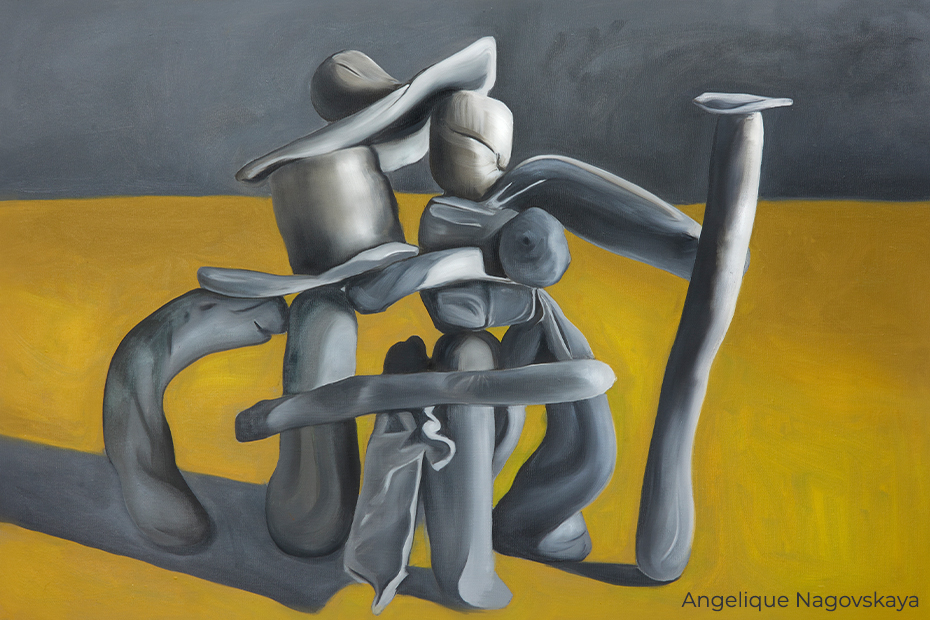The art world is a complex thing. It can be challenging to access without a bit of help – not just for the art-loving public, but for artists too. Yet, thanks to the Textura digital canvas and the Vieunite innovative art library, things are set to change. For the first time, you can experience the contemporary art scene in your own home. By viewing art on your digital frame and purchasing your favourite artworks, you are actively discovering and supporting the household names of tomorrow.
In this article, we highlight Vieunite’s approach to discovering contemporary art. Read on to discover how we bring cutting-edge culture to your home, how this gets you closer to the art, and what it means for our community of artists.
The Vieunite Library
Our extensive library of world-class art covers every period of history from the medieval to the contemporary. Many people are primarily interested in well-established artists, the ‘classics’. Others want something that complements their home décor. But a lot of people come to Vieunite because we can bring them something more – a taste of what’s going on in artistic hot spots around the world: Shoreditch in London, Kreuzberg in Berlin, or Chelsea in NYC.
Researching contemporary art requires a different skill set from setting out and organising the canon of Western art. To understand contemporary art, we must be active and deeply familiar with the warren-like studio complexes of the contemporary art world. But building an art library is not like diving for pearls. it’s not enough to find great art. We must also build relationships with great artists who make it because art is not just about images.
The Living Story of Art
When you think of ‘art’, you think of paintings and sculptures. But art is also about connecting with the people who make it. Art is a deeply personal and expressive form of communication. But art is also profoundly connected with the personal context of the viewer, being interpreted in the light of their experience and knowledge. This exchange of perspectives generates meaning. In our recent interview with Canadian-American painter Angélique Nagovskaya, she spoke about the importance of imaginative engagement with her own work:
“I want [the audience] to have a sense of wonder and contemplation… I want them to slow down and immerse themselves in the details of the painting and reflect on their presence in front of this piece, and then think about their own lives. How do they connect with it? What does this remind them of? What feeling does it give them? … I want there to be a connection, to be an experience. … [This] allows anyone to feel like they can connect to it, they can feel themselves in the painting.”
In a similar way, Welsh artist, Caitlin Flood-Molyneux, commented when we spoke with her on the importance of her audience being able to contextualise work for themselves:
“Offering something to someone is very big in my practice as an artist. I know exactly what that work is about. … but to keep it vague … it offers people this experience to have fun with it, and you know, there’s no right or wrong with my work.”
The individual encounter is of primary importance for any individual viewer – and this is something that our Vieunite artists recognise. But it is also the start of a more extensive, more subtle process that further enlarges the meaning of art.
Firstly, each time an artwork is viewed, the meaning will be subtly altered because no one’s context remains static from one day to the next. Secondly, if you imagine a painting in a gallery or the Vieunite Library, many such bilateral conversations or interpretations will occur simultaneously, as each image has a large audience. These conversations add up. Some are formalised through journalistic, academic, and curatorial records to create a history of interpretation.
The experience and meaning of an artwork are not limited to what meets the eye. Aspects of the work may be tacitly understood by the artists, some may be unknown, and some may even be erroneous. However, all these different perspectives form an aura that amplifies the significance of the artwork. To fully appreciate the artwork’s meaning and significance, rich interpretation and description are essential. Our library aims to bring this to our audience, both for contemporary and historical works of art.
For living artists, we take a different approach to bring their stories to life. We hope to showcase contemporary artists through our library, and we work hard to know our artists as well as we can. We visit their studios, attend their shows, and interview them to provide the best possible editorial content. This way, we can get you as close as possible to the action of contemporary art.

Benedict is Vieunite’s Cultural Director and a lecturer at Nottingham Trent University.
